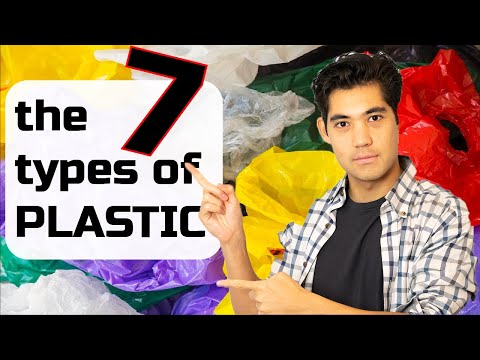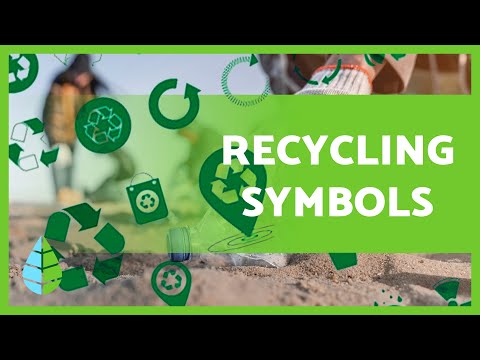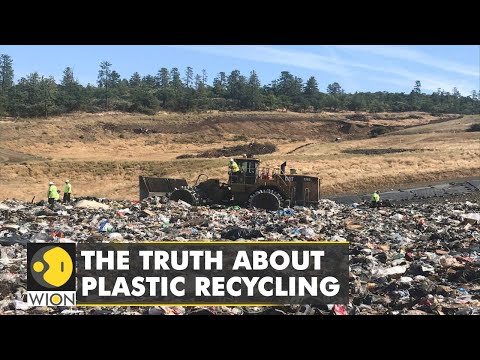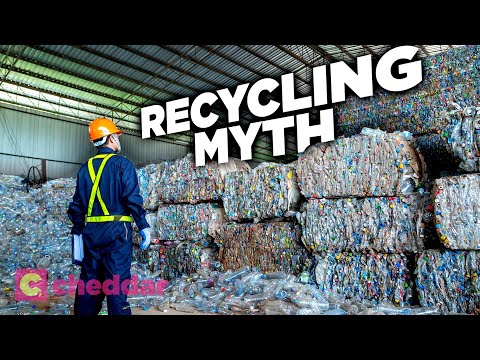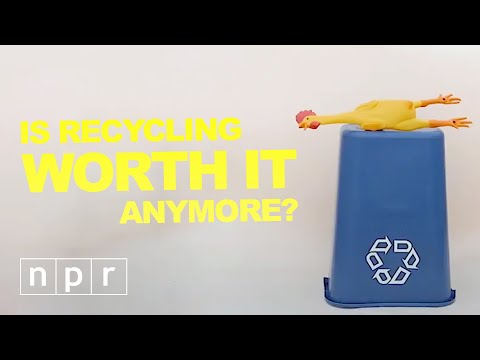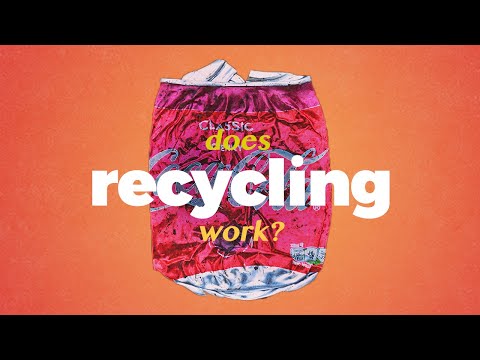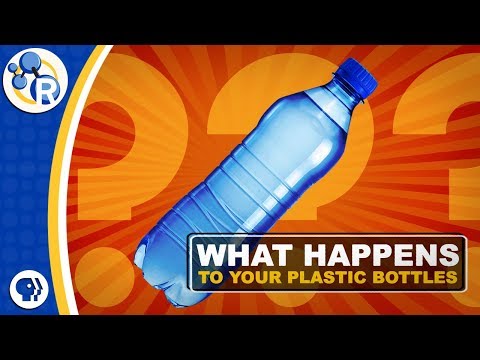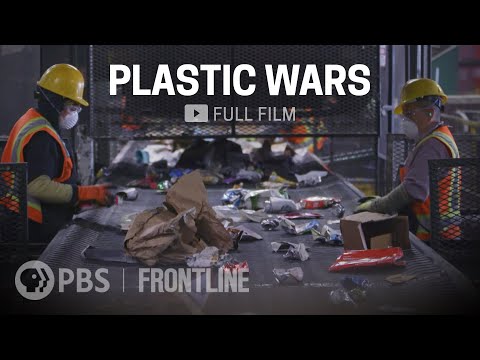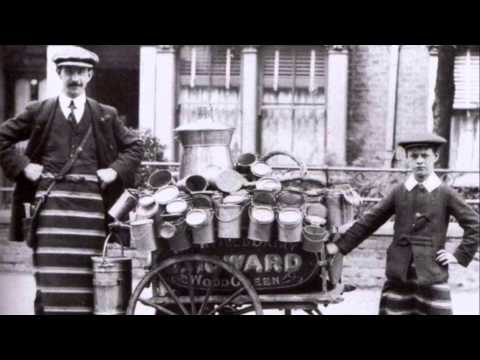Those “people” are the oil and plastic industries. Yes, oil. Plastic is made from oil, and both industries work closely together, that’s if they’re separate at all. However, this doesn’t mean the environmentalists supporting plastic recycling are innocent either. Read on, and let’s surprise you.
10 Every Plastic Is Recyclable
The plastic industry categorizes plastic into seven groups, depending on its chemical makeup. However, only type 1 and 2 plastics are recyclable. The rest could be recycled but are generally not. PET (polyethylene terephthalate) and HDPE (high-density polyethylene) are the type 1 and 2 plastics we just talked about. PVC (polyvinyl chloride) is the third. It could be recycled, but the process is complicated, and recyclers just avoid it altogether. Next is LDPE (low-density polyethylene), which is used to make super-thin products like plastic bags. It is recyclable, too, but is almost never recycled because of its notoriety for clogging recycling machines. Besides, these plastics are dirt cheap to make and are actually more expensive to recycle than to manufacture from scratch. PP (polypropylene) is the fifth type of plastic. It is recyclable but is rarely recycled because of its fondness for turning black or gray and retaining the scent of the previous product it covered. PS (polystyrene) is the sixth type of plastic, while the seventh isn’t really a type of plastic per se, but a catch-all label for every plastic that doesn’t fall into the first six classes. Type 6 and type 7 plastics are usually never recycled.[1]
9 Plastics with the Recycling Symbol Are Recyclable
If we asked you to describe the symbol identifying a plastic as recyclable, you would probably mention the three arrows shaped in the form of a triangle. That’s correct. But what if we told you most plastics with the symbol aren’t recyclable? There are actually two lookalike symbols out there. The first, which we just described, is the original symbol, and it means a plastic is recyclable. The other looks almost like it, except the middle of the triangle contains a number between one and seven. As you may have guessed, the number indicates the type of plastic we’re dealing with. This second symbol is not the recycling symbol but a Resin Identification Code (RIC). According to the Society of Plastics Institute (SPI) which developed RIC in 1988, the codes are necessary to help recyclers properly identify and sort plastics for recycling. But does that rationalize the use of recycling arrows, especially for plastics 3 to 7, which are rarely or ever recycled and generally deemed unrecyclable? The truth is that SPI was a front for the oil and plastic industry. And while they never admitted it, they developed RIC to cause confusion and protect their business from anti-plastic and pro-recycling movements. And it’s working. Everyone confuses the RIC with the recycling symbol.[2]
8 Recycling Plants Recycle All Types of Plastic
The unspoken truth about recycling is that different types of plastics—and even the same type of plastic manufactured using different methods—cannot be recycled together. This is evident in the case of HDPE (type 2), where injection-molded HDPE and blow-molded HDPE are recycled separately. And this is a problem because recycling plants are built to handle just one type of plastic. Even then, these plants only recycle plastics that don’t contain contaminants. But what is a contaminant anyway? It’s what recyclers call anything other than the plastic they want to recycle. This ranges from other plastic types to food or liquid inside the plastic undergoing recycling. Contaminants make recycling expensive and can be dangerous to nearby workers. That’s why tons of recyclable plastics containing even small amounts of contaminants end up in landfills instead.[3]
7 We Recycle Our Plastic
Every now and then, we hear of a city or private business opening a new recycling plant to…err…save the environment. That is good news, isn’t it? Nope. The U.S. actually does a terrible job at recycling its plastic waste. For a start, 69% of plastics used in the U.S. fall under types 3 to 7, which means they end up in landfills. Of the 31% left, the U.S. only has enough plants to recycle 8.4%. So what happens to the rest? Believe it or not, the U.S. exports them. Most of it went to China until the Chinese government banned them in 2018 because they contained too many contaminants. Rather than going through the hard work of sorting them, Chinese recyclers just dumped them in landfills or the ocean. The government noticed and issued the ban.[4]
6 Other Countries Recycle Our Plastic
The U.S. realized it needed a new trashcan after China decided it was no longer interested in importing 95.4% of America’s plastic waste. So the U.S., along with Canada, Australia, and South Korea, turned to China’s neighbors—Malaysia, Thailand, Vietnam, Indonesia, and the Philippines—to pick up China’s former job. Altogether, these countries saw their plastic waste imports increase by 362%. Their recycling plants couldn’t handle all that waste, but their recyclers imported them anyway, only to dump them in landfills. Those countries soon got enough and by the end of 2018, Thailand, Malaysia, and Vietnam announced limitations on plastic waste imports with plans to introduce total bans in the future.[5]
5 Recyclers Do It for the Environment
What is the whole point of recycling? Watch this video on YouTube Environmentalists say it’s for the environment. But environmentalists don’t run recycling plants. Businesspeople do. And like every other businessperson, they are in it for the money. The thing is that even though we consider used plastic as worthless trash, it costs money to pick up, transport, and sort before being sold to recyclers. The waste collectors handling this part of the process need to make profits to remain in business. And so do the recyclers that buy and turn the plastics into new products. This means the price of used and recycled plastic rises and falls with oil prices, natural disasters, and plastic waste legislation. Make oil dirt-cheap, and no one will recycle anything anymore since it’d be cheaper to make new plastic from oil. And if you’re a large importer of plastic waste, ban it like China did in 2018, and used plastic will instantly become super cheap, making plastic waste processing unprofitable. But the situation is no better when oil gets expensive or natural disasters wipe out cotton farms as it did in Pakistan in 2010. (The 2010 incident drove up the price of polyester, a cotton replacement made from plastic.) While these incidents should ordinarily encourage more recycling, they don’t since waste collectors increase the price of used plastics, which drives up the price of recycled plastic. Some recyclers buy the used plastic at the new rates, while those that cannot afford to shut down instead.[6]
4 Recycling Is Good for the Environment
Environmentalists often talk about how the extraction and conversion of oil into plastic pollutes the environment and how used plastics end up in landfills and the world’s oceans. While that is true, we could say the same thing about recycling. Watch this video on YouTube First things first, trucks and ships use fuel to transport used plastics to Asian countries struggling to recycle their own plastic. And by the time they get there, between 20% and 70% of the plastics are found to contain contaminants, making the whole batch unrecyclable. So they’re taken to landfills, dumped in the ocean, or burned, creating more pollution in the process. But is the situation any better with plastics that get recycled? The answer is still no. Recyclers use fuel and chemicals to recycle plastic. On top of that, plastics release pollutants that contaminate water and air during recycling.[7]
3 Plastic Is Recycled Infinitely
The unspoken truth is that recycling weakens the chemical composition of the plastic. That’s why most plastics are recycled into a lower quality and less useful product. Watch this video on YouTube For instance, plastic soda bottles are recycled into things like sewer drainpipes because they are not strong enough to become another bottle. Even at that, most plastics (including the recyclable types 1 and 2) are rarely recycled more than once. For instance, type 1 plastic (PET) is recyclable up to three times, but that barely matters because it is usually recycled into polyester, which is unrecyclable. So we could say type 1 plastic is only recycled once. Type 2 plastic (HDPE) can be recycled several times. For example, one European recycling machine maker recycled it ten times, but that was under very specific conditions. Types 3, 4, and 6 plastics can be recycled once, but as we said earlier, that rarely happens, and they’re thrown in landfills instead. Type 5 plastic can be recycled four times but only 1% of it ever gets recycled. Type 7 plastics may be recycled, but that’s usually on a case-by-case basis since the group contains different kinds of plastics.[8]
2 The Plastic Industry Supports Recycling
The oil and plastic industries are leading the fight against single-use plastics. They promote recycling even though they make money when we buy new plastic and not when we recycle. That’s weird. Why do they support recycling when they should be doing the opposite? Watch this video on YouTube The fact is that the oil and plastic industries do not support recycling. The supposed support is just a tactic to calm the nerves of environmentalists and save themselves from public backlash while openly selling more plastic and laughing to our faces. Remember, we talked about the plastic industry introducing a set of symbols to confuse everyone. Well, that’s one of the many tricks up their sleeves. They know that as long as they can make us believe most plastics are recyclable, we’d pay more attention to the recycling industry than to them. That’s why we have no qualms about using products made of plastic. We believe they’d be recycled. When they don’t, we blame the recycling industry for not doing enough instead of blaming the plastic industry for making unrecyclable plastics—and ourselves for buying products packaged in those plastics. And it’s working. In 2010, the plastic industry produced two times more plastics than they did in 1990, and by 2050, they will produce three times more plastic than they did in 2020. This is even though recycling is a mess, and less than 10% of all plastics are recycled. (Oops, we just blamed the recycling industry.)[9]
1 Plastic Is Bad
After all that’s said and done, why does plastic receive a lot of hate? Because it takes centuries to decompose, gets into the ocean, and ends up in the noses and bellies of sea creatures. But imagine if we listened to environmentalists and banned plastic. What would replace plastic? We need to go back in time for our answers. Before plastic became a thing, wood, glass, ivory, and tortoiseshells were among the go-to materials for everything we use plastic for today. Wood is from trees, which means deforestation. And what about ivory and tortoiseshells? They are from elephants and turtles. So would we rather cut down trees and kill animals than use plastic? History says no. That was why we invented plastic back in the mid-19th century. Our demand for ivory was so great that elephants were going extinct. So we started seeking an artificial product to replace ivory and save elephants. That product was plastic. It has saved the lives of many animals and trees ever since and is still saving them. Also, before plastic packaging, dangers lurked in home kitchens and public eateries. Foods needed to be preserved to last but were limited in their container options. Grocery shopping was vastly different, in that bulk foods of unknown origin or expirations date were packaged by the grocer as needed.Food poisoning and illnesses from lead-lined crockery also posed a problem. Plastics helped eliminate some of these issues.[10]
